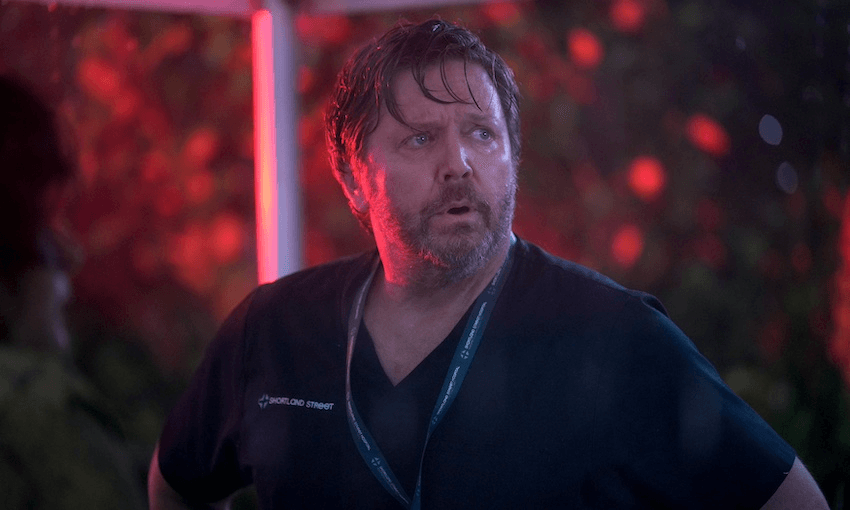Set in small town Kaikōura, Three’s sharp new local drama follows two best friends and a surrogacy pact that goes wrong.
This is an excerpt from our weekly pop culture newsletter Rec Room. Sign up here.
Kaikōura has never looked better than in new psychological drama Friends Like Her, with its snowcapped mountains, lush green land and blue skies. The scenic setting is the perfect foil for the drama lurking beneath the surface, with the series set in the small coastal town one year after the 2016 earthquake. The community is still recovering from the disaster that saw them cut off from the rest of the country, and while Kaikōura may be a beautiful place to live, this is a town that’s learned to rely on their friends and family to survive.
That’s great, as long as your friends and family aren’t trying to ruin your life.
Created and written by novelist Sarah-Kate Lynch, Friends Like Her series follows best friends Nicole (Morgana O’Reilly) and Tessa (Tess Haubrich), whose relationship turns toxic after a surrogacy arrangement falls through. O’Reilly is brilliant as Nicole, the capable mother of three who’s pregnant with a surrogate child for Tessa and husband Rob (Vinnie Bennett). Through flashbacks, we see how Tessa and Nicole met while backpacking through Thailand years ago. Having now both settled in Kaikōura, each marrying brothers, the friends appear to have an unbreakable bond – Nicole is giving Tessa a much longed-for baby, after all.
But the reality is different. Nicole and husband Liam (Jarod Rawiri) are struggling financially after the quake, while Tessa and Rob’s helicopter business has boomed. There’s a quiet, simmering tension between the families, made worse by a mysterious event from Tessa and Nicole’s past, which we see glimpses of through flashbacks. Their lives are jolted again when the surrogacy agreement is torn apart, bringing years of resentment and jealousy to the surface. “You owe me!” Tessa screams at Nicole, referring to a secret debt that will be recalled in the most dramatic of fashions.
As the ground fractures beneath them, Nicole and Tessa’s lives begin to crack too. O’Reilly brings a strength and fierceness to Nicole, who is only just holding her life together, while Haubrich gives a welcome hint of vulnerability to the manipulative Tessa. The two women are surrounded by a community of richly drawn and relatable characters, from Liam and Rob’s stern foster mother Fran (Elizabeth Hawthorne) to Rob’s ex-wife Stacey (Bree Peters) and nosey shopkeeper Andi (Jodie Rimmer). These characters all feel like people we know, and they help to build a picture of small town life that is equally as claustrophobic as it is comforting.
From the book club meetings where the women would rather talk about how annoying Tessa is, to the endless river of Nicole-related gossip that flows from the local shop, nothing in Friends Like Her will remain secret for long. Nicole and Tessa have plenty to hide, but the show is assured and restrained enough to not give us all the answers at once. Instead, it treats the viewer with intelligence, giving us just enough information to hook us in, and adding plenty of twists to keep us guessing.
Friends Like Her is a compelling and intriguing psychological drama that’s easy to watch, but doesn’t show its hand too soon. Sure, the first few moments are a bit – ahem – shaky, but once the show jumps forward in time and the story begins to unfold, Friends Like Her becomes a confident local drama full of dynamic characters, smart writing and clever twists. The aftershocks just keep coming, and having hoovered up the first two episodes, I’d have happily binged the rest in one sitting.
Friends Like Her premieres on Three on Monday 15 April at 8.40pm and streams on ThreeNow.



